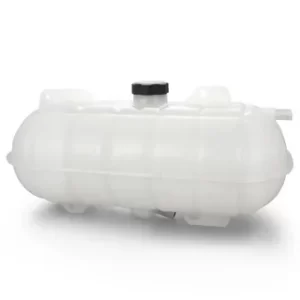The Mitsubishi Pajero, known for its robust design and off-road capabilities, requires periodic maintenance to function at its best. Among the various components that necessitate attention is the clock spring, a crucial part that can significantly impact both safety and vehicle functionality. Pajero clock spring replacement is located within the steering wheel and maintains electrical connections even as the wheel turns. While often overlooked, the clock spring ensures the operation of essential systems such as steering wheel controls and airbags.
Function of the Clock Spring in the Mitsubishi Pajero
In the Mitsubishi Pajero, the clock spring is an essential component of the steering wheel assembly. Its primary function is to maintain continuous electrical connections between the stationary and rotating parts of the steering wheel.
This enables the operation of various steering wheel-mounted controls, such as those for the horn, audio system, and cruise control. More crucially, the clock spring is integral to the airbag deployment system, ensuring that electrical signals can be sent to deploy the airbags in the event of a collision.
Properly Functioning Clock Spring
Without a properly functioning clock spring, these systems would fail to operate correctly, posing significant safety risks to drivers and passengers. The clock spring comprises a coiled, ribbon-like electrical connector that can wind and unwind as the steering wheel turns, allowing for seamless electrical continuity.
Over time, wear and tear can affect the clock spring’s performance, making regular inspections and timely replacements necessary. Understanding its role can help vehicle owners appreciate the importance of maintaining this part for optimal safety and functionality.
Signs of a Failing Clock Spring Pajero
Indicators of a malfunctioning clock spring pajero can vary but often include issues with steering wheel-mounted controls.
Warning light
A more alarming sign is the illumination of the airbag warning light on the dashboard, indicating a potential failure in the airbag deployment system. This warning light serves as an essential alert that should not be ignored, as it could signify that the airbags might not deploy correctly in the event of a collision.
Unusual sounds
Other symptoms may include unusual sounds from the steering wheel when turned, which can suggest internal wear or damage to the clock spring.
Intermittent electrical issues
Additionally, any intermittent electrical issues within the steering wheel controls should be taken seriously, as they may indicate a deteriorating clock spring. These problems often start as minor annoyances but can escalate, impacting the vehicle’s safety features.
Immediate attention
Observing such signs should prompt immediate attention to avoid further complications. Early detection and resolution of clock spring issues are key to maintaining the proper function of critical safety systems within the Pajero.
Regular vehicle inspections can help identify these problems before they worsen, ensuring continued safety and reliability on the road.
Importance of Timely Replacement
Delaying the replacement of a faulty clock spring can have significant repercussions. If not addressed promptly, the malfunction may escalate, leading to the complete inoperability of steering wheel-mounted controls such as the horn, audio system, and cruise control.
More critically, a malfunctioning clock spring can impair the airbag system, increasing the risk of severe injuries during a collision. The airbag warning light on the dashboard often serves as an early indicator of clock spring issues; ignoring this warning can compromise the vehicle’s safety features.
Continued Functionality
Timely replacement of the clock spring is vital for ensuring the continued functionality of these essential systems. Regular maintenance and periodic checks can help identify issues early, preventing further complications. For instance, catching a minor fault before it leads to a more significant failure can save time and money in the long run.
Additionally, ensuring the clock spring is in good working condition can enhance the overall driving experience by maintaining the responsiveness of steering wheel controls. A well-maintained clock spring contributes to the vehicle’s reliability, offering peace of mind to drivers and passengers alike.
Given the critical role of the clock spring in maintaining vehicle safety and functionality, it is essential to address any signs of wear or malfunction without delay. Regular inspections and prompt replacements are key strategies for keeping the vehicle in optimal condition.
Steps in Replacing a Clock Spring Mitsubishi Pajero
Replacing a clock spring Mitsubishi pajero involves a systematic approach to ensure safety and effectiveness.
Carefully removed
Initially, the vehicle’s battery should be disconnected to avoid accidental electrical discharges. Next, the steering wheel must be carefully removed to access the clock spring. This step often requires specialized tools to ensure no damage occurs to the steering column or other components.
Detached from its mounting
Once the steering wheel is off, the next step is to disconnect any electrical connectors attached to the old clock spring. It is crucial to note these connections to facilitate the correct installation of the new component. After this, the old clock spring can be gently detached from its mounting.
Aligning it correctly
Installing the new clock spring involves aligning it correctly with the steering wheel’s position. Before installation, it is essential to ensure that the new clock spring is centered and set to its neutral position. This alignment prevents over-winding and subsequent damage during operation.
Reconnect all electrical connectors.
Once in place, reconnect all electrical connectors and reattach the steering wheel. Finally, reconnect the vehicle’s battery and conduct a test drive to verify that all steering wheel controls and systems are functioning correctly.
Professional v/s DIY Replacement
When replacing a Pajero clock spring, vehicle owners are often torn between professional services and a DIY approach. Professional mechanics offer the benefit of experience and the assurance that the task will be performed correctly, reducing the likelihood of subsequent issues. These specialists possess the necessary tools and expertise to handle the replacement efficiently and safely, minimizing risks associated with improper installation.
In contrast, a DIY replacement can be more cost-effective, as it eliminates labor charges. However, it requires a certain level of mechanical proficiency and access to specialized tools. Inadequate knowledge or incorrect installation can lead to further complications, potentially causing more harm than good.
Additionally, the complexity of modern vehicle systems means that even minor errors can have significant repercussions, particularly concerning safety features like airbags. Therefore, while the DIY route may appear appealing for its cost savings, it has inherent risks that must be carefully weighed. Assessing one’s capabilities and the importance of the clock spring’s role in vehicle safety can guide owners in making an informed decision.
Cost Implications of Mitsubishi Pajero Clock Spring Replacement
The choice between professional services and a DIY approach can influence the financial considerations of replacing a Mitsubishi Pajero Clock Spring.
- Professional services generally provide a comprehensive package that includes parts and labor, offering convenience and peace of mind.
- These services ensure the replacement is executed accurately, adhering to all safety standards.
- On the other hand, opting for a DIY replacement may reduce immediate costs by eliminating labor charges.
- However, this route demands a certain level of mechanical expertise and procuring specialized tools.
Lead To Additional Expenses
Any mistakes made during a DIY installation can lead to additional expenses, not to mention potential safety risks. Therefore, it is imperative for vehicle owners to realistically assess their mechanical skills and the availability of the necessary tools before undertaking such a task.
The complexity of modern vehicle systems, particularly those involving safety components like airbags, underscores the importance of precise and correct installation. Vehicle owners must balance the initial cost savings of a DIY approach against the potential risks and long-term expenses that might arise from improper installation. Thus, informed decision-making is crucial in this context.
Conclusion
Regular vehicle maintenance is indispensable to maximize the lifespan of a newly installed clock spring in a Pajero. Routine inspections should include checks on the steering and electrical systems to detect any early signs of wear or potential issues. Careful steering wheel handling can also minimize undue stress on the pajero clock spring replacement, thereby preventing premature damage. Adhering to manufacturer guidelines for maintenance intervals can significantly contribute to the durability of the clock spring. Additionally, addressing any minor faults promptly can avert more extensive repairs in the future.
FAQs
FAQ 1: What is the role of the pajero clock spring replacement?
Answer: The pajero clock spring replacement, also known as the spiral cable, connects the steering wheel to the vehicle’s electrical systems, allowing signals to be transmitted while the wheel is turned. It also ensures the proper functioning of critical components like the airbag, horn, and steering wheel controls.
FAQ 2: How can I tell if the clock spring in my Pajero needs replacement?
Answer: Signs of a failing clock spring include the airbag warning light coming on, the horn not working, malfunctioning steering wheel controls, and unusual noises when turning the steering wheel. If you notice any of these symptoms, it’s essential to have the clock spring inspected and replaced.
FAQ 3: Why is timely clock spring replacement necessary for my Pajero’s safety?
Answer: Timely replacement of a faulty clock spring is crucial for maintaining the proper functioning of the airbag system, ensuring it deploys correctly in the event of a collision. It also ensures that other safety features, such as the horn and steering wheel controls, operate reliably, enhancing overall vehicle safety.
| Related Business Listings |
| Contact Directory |
| Local Business Profiles |




